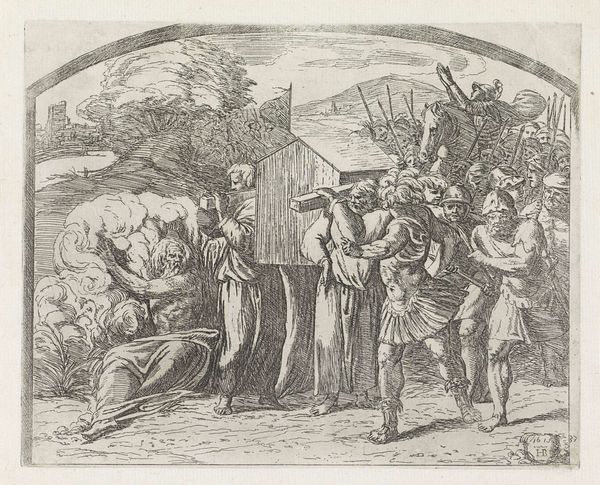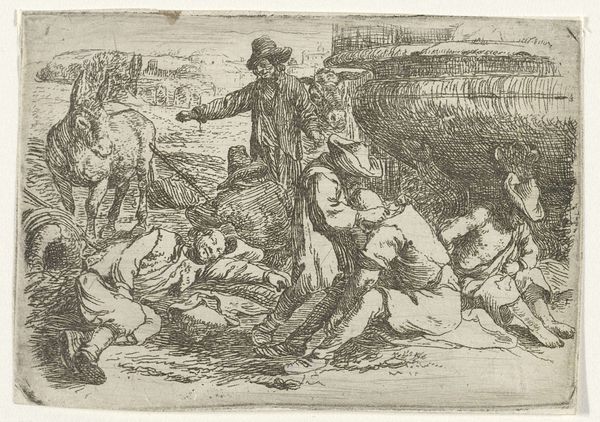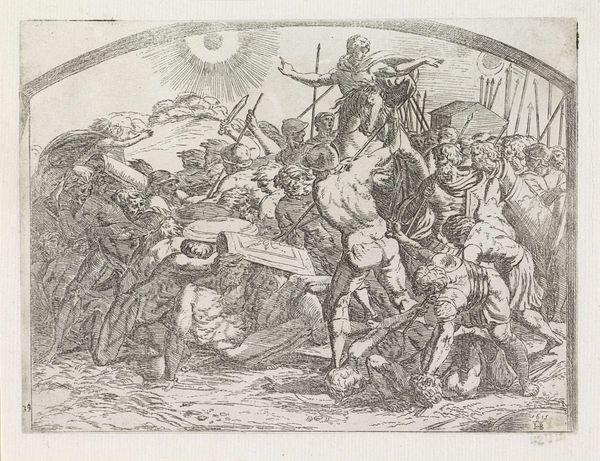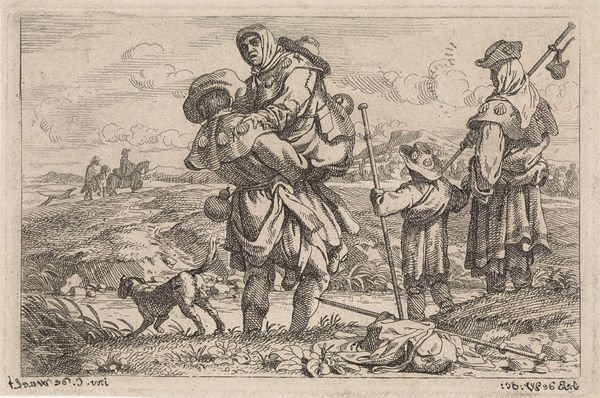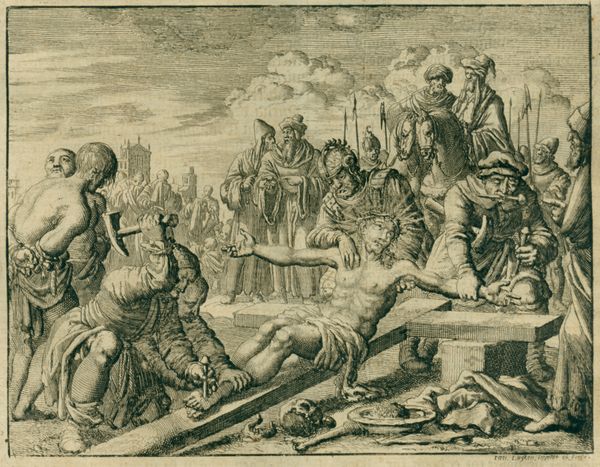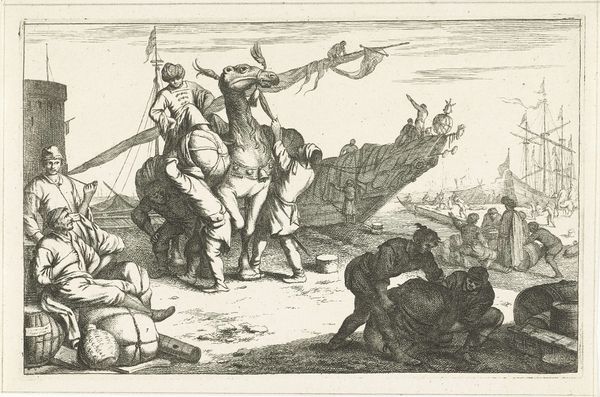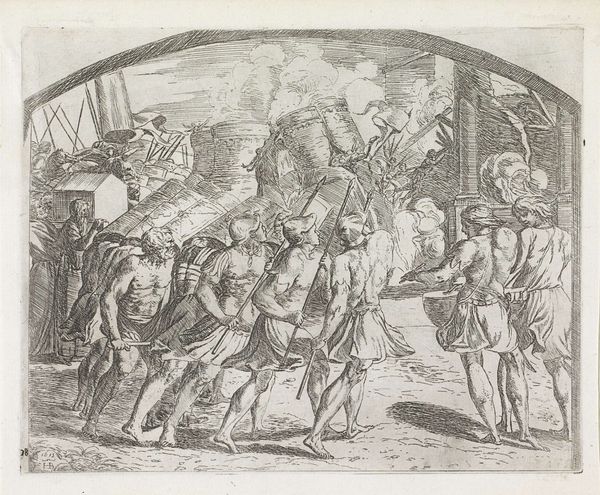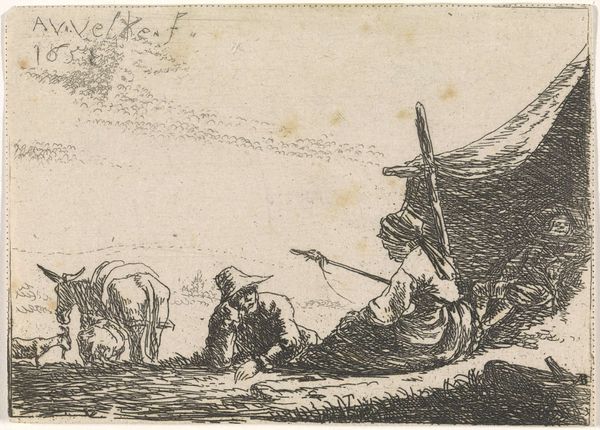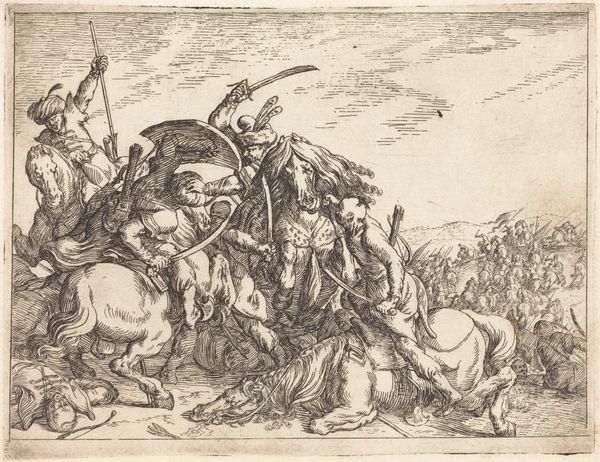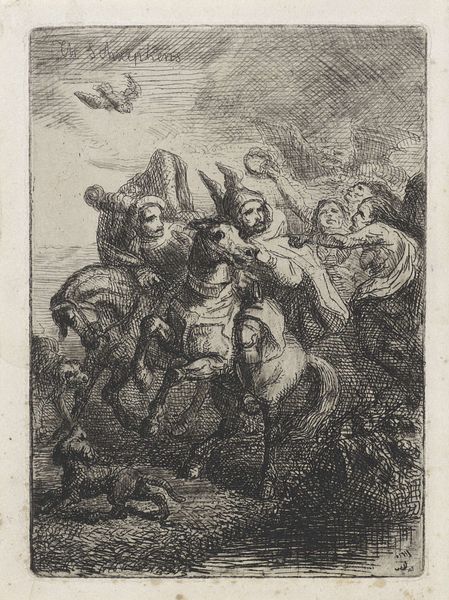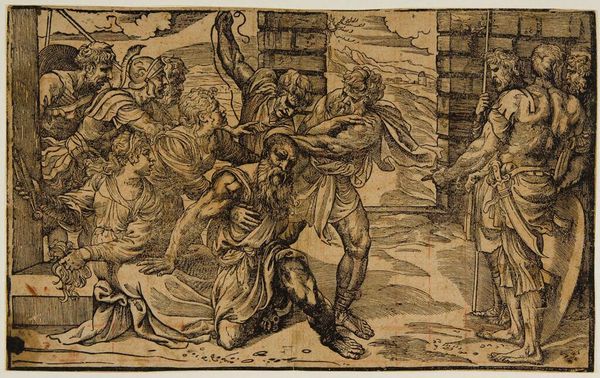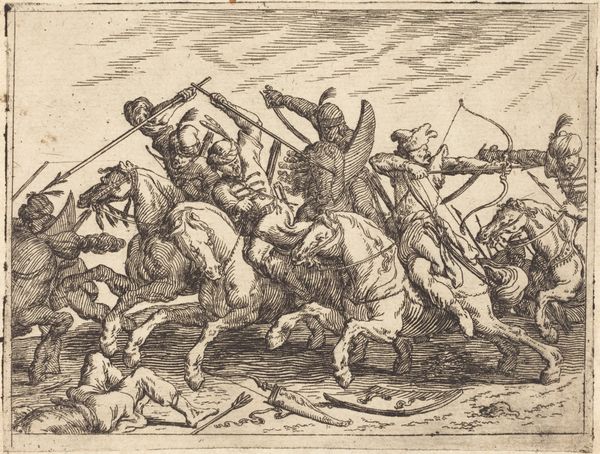
drawing, print, etching
#
drawing
#
baroque
# print
#
pen sketch
#
etching
#
pencil sketch
#
landscape
#
figuration
#
line
#
genre-painting
Dimensions: height 89 mm, width 132 mm
Copyright: Rijks Museum: Open Domain
Curator: Jan Baptist de Wael's "The Cart," created between 1642 and 1669, employs etching to capture a lively genre scene. Editor: It feels...dense. Packed. All this weight piled onto a rickety cart, pulled by a skinny horse and what looks like a very tired family. You almost expect the whole thing to collapse in a heap of dust. Curator: Indeed. The composition, almost pyramidal in structure, directs our gaze upwards from the active base, teeming with figures, towards the apex of overflowing possessions on the cart. Observe the artist’s confident use of line. Editor: Those lines create so much energy. They're scratchy and immediate, giving it a documentary feel, like a snapshot of everyday life. All that detail; a dog nipping at the wheels, chickens riding high above…it's chaotic, but full of life. Curator: Consider how the use of hatching and cross-hatching builds depth and shadow. It defines form while simultaneously creating a sense of movement – the cart struggling forward against the landscape. This is a masterful application of baroque principles. Editor: I think it also shows the precariousness of life. They're clinging to all these things, possessions that weigh them down even as they travel, becoming their entire world. There’s something poignant about that fragile, mobile existence, chickens and all. Curator: Such emotive interpretations are understandable. Nevertheless, it remains the interplay of line, form, and composition that structures its lasting effect as a work of genre excellence. Editor: Maybe. But it also reminds me of my own overloaded car during family vacations, so... I get it. This piece captures the very human drama of possessions, whether grand or humble.
Comments
No comments
Be the first to comment and join the conversation on the ultimate creative platform.
